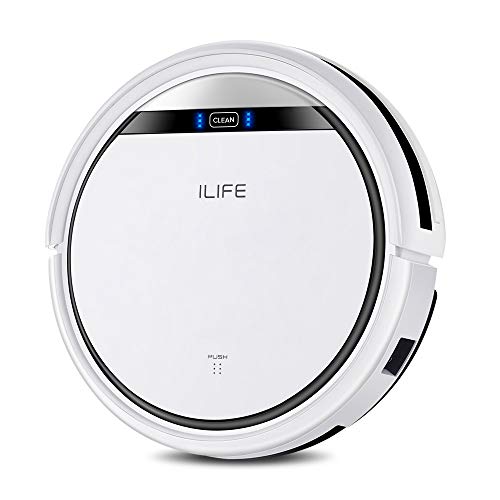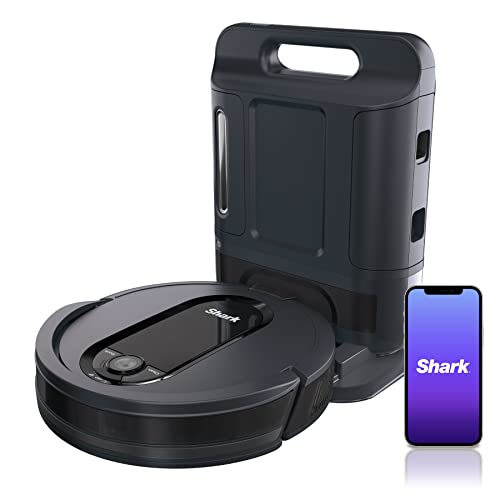Why You Should Focus On Improving Cleaning Robot Mop And Vacuum
페이지 정보
작성자 Jamey Rosenhain 작성일 24-08-26 08:04 조회 9 댓글 0본문
 How to Take Care of a Robot Mop and Vacuum
How to Take Care of a Robot Mop and VacuumA robot vacuum and mop can save you time when cleaning. But they also require regular maintenance, including emptying the dirt bins, washing reusable cleaning pads in accordance with the manufacturer's instructions, or eliminating single-use pads and maintaining the sensors clean.
Look for mapping features to avoid making multiple trips over the same areas and app integration that lets you set schedules, adjust power modes and settings and save maps of your home.
1. Empty the Dirt Bin
Regular maintenance is required for most robot vacuums and mops. This includes emptying the dirt bins, and washing pads, as well as keeping track of consumables that require replacement. The better you maintain these components, the more they'll last. Some cleaning robots also need a bit of extra attention, especially those with water tanks.
First, empty the dustbin completely after each cleaning session. This is a simple task however it is vital to the performance of your robot. It is also recommended to cleanse the filter regularly. Consult your user manual to determine the best robot vacuum mop for hardwood floors method and when you should clean the filters.
While the mopping function on your robot may eliminate a lot of dust off your flooring, there are tiny particles that can accumulate in cracks and gaps on flooring. These include dandruff and hair particles, mites and dirt, as well as pet hair. It is important to use a vacuum cleaner or sweeper on occasion to clean these areas in order to prevent these particles from that can cause health problems.
If you plan to use your robot mop, then it is crucial to select one that comes with high-quality machine and large dust and water tanks. LEGEE, for example has one of the largest dust bins and water tanks among its competitors so you don't need to stop cleaning or interrupt the robotic mop to refill the tank.
Don't forget to avoid putting vinegar or floor cleaners into the tank of your robot mop's water unless instructed by its manufacturer. These chemicals can harm your machine and void the warranty.
A robot mop and vacuum are an excellent way to help you free up time so that you can concentrate on other important things such as your family or your work. However, some stains and dirt can be too stubborn for your robot to deal with. It is also crucial to periodically do a full cleaning yourself using a traditional vacuum cleaner to remove the tougher stains and clean areas that your robot is not able to reach.
2. Wash the Cleaning Pads
Depending on the purpose you use your robot vacuum that vacuums and mops mop for the pads can become stained or dirty. It is essential to clean your cleaning pads on a regular basis. This can be accomplished by throwing them in the washer with a regular load of laundry or hand-washing them. Avoid using fabric softener or dryer sheets, as these will reduce the absorbency of the pad and cause it to stop working properly.
If your mop doubles as an air cleaner, it will require its dust bin to be emptied and cleaned on a regular basis. Hybrid models that can vacuum and sweep using a dry mop are also affected. Many robot mops have brush attachments that must be cleaned.
It is important to rinse the mop pads thoroughly to remove any dirt and grime. You can also soak the pads in warm water for a few minutes to loosen any debris that's stuck. Once they're clean then you can either let them dry in the air or use a low heat setting in the dryer. It is recommended that you clean your pads every 2 to 3 months.
During the cleaning cycle mop or vacuum cleaners can pick up small items that could damage the sensors of your robot. To prevent this from happening, you'll need to occasionally wipe the sensors clean with a microfiber cloth. This will assist the robot navigate around the space without hitting furniture or walls.
Most robot vacuums and mops are equipped with sensors on their bases which are used to detect obstacles and ensure the machine isn't caught in tight spaces. They can become clogged with dust and other debris which is why you'll have to keep them clean regularly.
Certain robot vacuums come with a self-cleaning feature that you can use after each use. You can go to the website of the manufacturer to determine if this feature is available on your model. Typically, it takes around two or three minutes to complete this process and is accessible via an app or a button on the robot itself. This cycle should be repeated often with a mop or vacuum cleaner to ensure the performance of sensors and other components.
3. Clean the Charging Station
The majority of robot mops spray cleaning solution directly onto the floor to soften staining and then scrub them off using the scrubbing pad. Some robot mops use disposable mop pad, while others can be cleaned and re-used. Regardless of whether you opt for disposable or reusable mop pads, it is important to empty and wash them between cleaning sessions in accordance with the instructions provided by the manufacturer. It's also a good idea to drain the mop base or docking station dry between uses too, to prevent mildew from forming.
Like vacuum cleaners, robot mops and vacuum/mop combos require regular maintenance to keep them running smoothly. The maintenance tasks include emptying the dust bin, washing the pads and sometimes cleaning the sensors. If you have a robot mop with a dirt sensor, you may need to gently wipe it down every several cycles to remove dirt that could cause obstruction to the sensors and lead to errors in navigation.
Many robot mops come with an app that allows you to save your home's maps as well as set up cleaning schedules and even monitor the time when the machine requires maintenance. If you plan on purchasing a mop, you should look for one that is connected to your Wi-Fi so you can use the app to control it from any location.
A top-rated model that is the Samsung Powerbot Vac + Mop is a smart device with features that let it clean floors without you having to be home. The map function lets you to create virtual boundaries and no-go areas for the robot. You can also direct it manually to clean a specific area of the room. Its mopping and vacuuming capabilities are able to work on carpeting and hard floors, which makes it an ideal choice for homes with both.
Other features that make this 2-in-1 robot include an object avoidance sensor that assists it navigate around furniture and other objects as well as self-emptying garbage bins that reduce the amount of cleanup needed after every use. It is also programmable to run even while you're away and is a great option for busy homeowners. It's also quieter than other vacuums, which can be a plus for those who live with noise-sensitive children or pets.
4. Clean the Sensors
Apps are available for the majority of robot vacuums, as well as some mop and vacuum combos. They let you create automatic cleaning schedules and set cleaning modes. You can also monitor the frequency of maintenance. The app lets you manually clean start, stop and change your robot's settings from anyplace in the house.
The app is especially useful for robotic cleaners with maps features, such as cameras, lasers or optical dToF that allow it to save an image of the room and move around furniture. These features can reduce the amount of staining that occurs on your floor and make your cleaning chores less time-consuming.
When your robot's mapping sensors become dirty, the device could have trouble finding its way around your home. It is important to clean the sensors on a regular basis like you would a camera lens or smartphone screen. This should be done using a dry clean cloth. If you apply a wet cloth or cleaner, you could damage the sensors and cause malfunction.
It's also a good idea for you to clean your robot's brushes on a regular basis. This will prevent hair tangles from forming and clogging up the motor and will make it easier for your robot to remove dirt. It's also a good idea to clean your primary roller brush, as it's typically responsible for picking up dirt and can build up a lot of dust over time.
Finally, ensure that you only use the cleaning products recommended by your robot vacuum cleaner with mop's manufacturer. Other floor cleaners can damage your robot and could void the warranty. Most brands suggest using a mix of vinegar and water, or a cleaner that is designed specifically for their robot. Don't pour hot water or use a solution containing abrasives since they can damage internal components and leave behind a sloppy dust on your floors. If you have any questions check out the owner's manual for specific instructions on how to clean your robot cleaner. This will ensure that it runs efficiently and lasts longer.

- 이전글 The Next Big Event In The Bunk Bed For Children Industry
- 다음글 Senior Mobility Scooters Explained In Fewer Than 140 Characters
댓글목록 0
등록된 댓글이 없습니다.